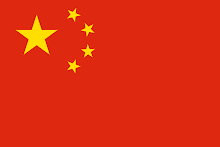 China's first spacewalk team returns to Earth
China's first spacewalk team returns to EarthBy GILLIAN WONG
BEIJING (AP) — Three Chinese astronauts emerged from their
capsule Sunday after a milestone mission to carry out the
country's first spacewalk, showing off China's
technological know-how and cementing its status as a space
power and future competitor to the United States.
A senior space official said the mission — China's most
ambitious yet — took the country one step closer in its
plan to build a space station and then to land a man on the
moon.
Wang Zhaoyao, deputy director of manned space flight, said
the program is looking to launch a new orbiting vehicle and
set up a simple space lab by 2011. There are also hopes of
sending unmanned and manned space vehicles to perform
docking activities with the target vehicle.
By 2020, China wants to launch a manned mission to
experiment with technologies that will enable astronauts to
take care of spacecraft for longer periods of time, Wang
told reporters at a briefing in Beijing after a parachute
brought the astronauts' capsule back to ground.
"After we have successfully completed these three steps, we
will go to even more remote areas," Wang said. "We believe
that as long as we can make further progress on the road of
science and technology, China will achieve the target of
putting a manned spacecraft on the moon in the near
future."
The United States is the only country to have accomplished
that feat, putting its first astronaut team on the moon in
1969. But its last human landing was in 1972, and it has
since concentrated on unmanned probes.
China's communist leaders, riding a wave of pride and
patriotism after hosting the Olympics, face few of the
public doubts or budgetary pressures that have constrained
space programs elsewhere. Saturday's spacewalk was watched
by cheering crowds on huge outdoor TV screens.
State broadcaster CCTV showed the astronauts' return Sunday
after their Shenzhou 7 ship's re-entry vehicle burst
through the Earth's atmosphere to make a landing under
clear skies in the grasslands of China's northern Inner
Mongolia region.
The vessel touched ground at 5:37 p.m. after floating down
gently while attached to a giant red-and-white striped
parachute, marking the end of the 68-hour endeavor.
"It was a glorious mission, full of challenges with a
successful end," said mission commander Zhai Zhigang, a
41-year-old fighter pilot. "We feel proud of the
motherland."
Zhai, Liu Boming and Jing Haipeng stayed inside the capsule
after landing for about 46 minutes to adapt to Earth's
gravity before slowly crawling out the narrow entrance.
Outside, the trio cheerily waved to cameras and reporters
from Chinese state media before sitting down in blue
fold-out chairs. They saluted as they were presented with
bouquets of flowers.
Premier Wen Jiabao applauded at mission control in Beijing
and shook hands with staff.
"This mission's success is a milestone; a stride forward,"
Wen said. "I would like to extend my congratulations to the
heroic astronauts who successfully completed this mission."
The premier also reiterated Beijing's longtime stance that
it is the Chinese people's "persistent aspiration" to
develop space technologies for peaceful exploration.
The spacewalk was a key step in mastering techniques for
docking two orbiters to create China's first orbiting space
station. Tethered to handles attached to the Shenzhou 7
ship's orbital module, Zhai remained outside for about 13
minutes before climbing back inside.
China has relied heavily on homegrown technology, partly
out of necessity. It has trouble obtaining such technology
abroad due to U.S. and European bans and is not a
participant in the International Space Station.
The Chinese program is backed by the secretive military.
While Beijing insists it is committed to a peaceful
program, analysts point to numerous potential applications
for its technology, such as when it used a land-based
missile to blast apart an old satellite last January.
China conducted its first manned space mission, Shenzhou 5,
in 2003, becoming only the third country after Russia and
the United States to launch a man into space. That was
followed by a two-man mission in 2005.




No comments:
Post a Comment